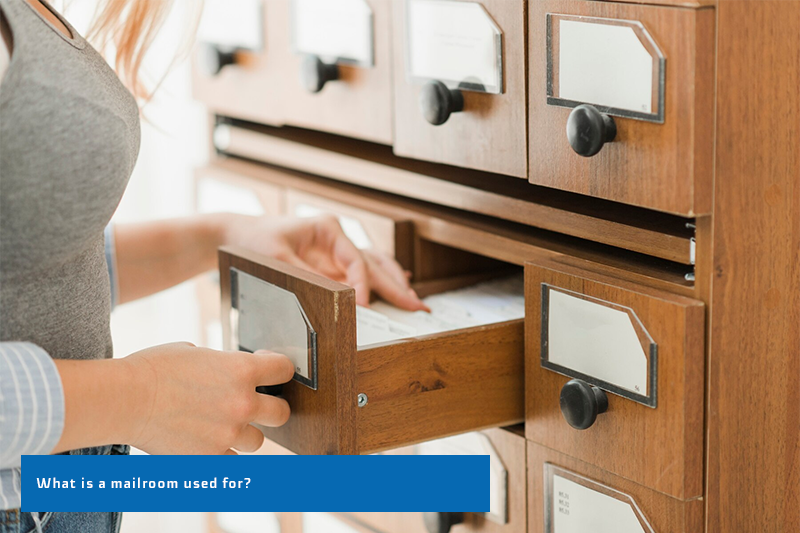What is a mailroom used for?
In the bustling environment of modern businesses, there are several critical components that keep operations running smoothly. Among these, the mailroom is often overlooked yet remains an essential hub of business communication. It is the nerve center where crucial information and materials are sorted, distributed, and managed, ensuring seamless internal and external communication.

Info
Understanding the Mailroom
A mailroom, often known as a post room, is a designated area within a company where all incoming and outgoing mail is processed. This includes letters, packages, and other forms of correspondence. The primary functions of a mailroom include receiving, sorting, distributing, and dispatching mail and parcels, both internally and externally. Mailrooms serve as the organizational hub for managing physical communications, ensuring that important documents and packages reach their intended destinations promptly and securely.
What is a Mailroom? Historical Context and Evolution
The concept of a mailroom has evolved significantly over time. In the early days of business operations, mailrooms were simple and manually operated, handling basic tasks such as sorting letters and packages. With the advent of the industrial revolution and the subsequent rise of large corporations, the need for more sophisticated mail handling systems became apparent. This led to the development of more structured mailrooms equipped with sorting machines and dedicated staff.
How Mailroom Supports Daily Operations
The mailroom is integral to the daily operations of any organization. By managing the flow of mail and packages, it ensures that essential documents, contracts, invoices, and other critical communications are delivered promptly. This timely delivery is vital for maintaining smooth business operations, enabling departments to function efficiently without delays.
Key Functions of a Mailroom
A mailroom is more than just a place where mail is handled; it is a dynamic hub that plays several critical roles in ensuring the smooth flow of communication and operations within an organization. Understanding the key functions of a mailroom can help businesses optimize their processes and improve overall efficiency.
Incoming Mail Processes
One of the primary functions of a mailroom is to manage incoming mail. This involves receiving mail from various sources such as postal services, couriers, and internal departments. The mailroom staff sorts the incoming mail by recipient, department, or category to ensure it reaches the right person or team efficiently. This process typically includes:
- Initial Receipt: Collecting mail from different carriers.
- Logging: Recording received items for tracking and accountability.
- Sorting: Organizing mail by department, floor, or individual recipients.
- Delivery: Distributing mail to the appropriate destinations within the organization.
Outgoing Mail Processes
In addition to handling incoming mail, the mailroom is responsible for preparing and dispatching outgoing mail. This includes:
- Collection: Gathering outgoing mail from various departments.
- Processing: Ensuring mail is properly addressed, stamped, and packaged.
- Dispatching: Coordinating with postal services and couriers to send out mail promptly.
Technology and Automation in Mailrooms
Mailroom Management Software
Mailroom management software is revolutionizing how mailrooms operate. These software solutions streamline mail handling processes by providing tools for logging, tracking, and managing mail and packages. Features often include automated notifications, digital logging, and real-time tracking, which enhance efficiency and accountability.
Automated Sorting and Tracking Systems
Automation has significantly improved the sorting and tracking of mail. Automated sorting systems use advanced technologies like optical character recognition (OCR) and barcode scanning to quickly and accurately sort incoming and outgoing mail. Additionally, integrated tracking systems provide real-time updates on the status and location of mail and packages, ensuring transparency and reliability.
Benefits of Automation Mailroom
Increased Efficiency and Accuracy
Automation reduces the time spent on manual sorting and tracking, allowing mailroom staff to focus on more strategic tasks. Automated systems minimize human error, ensuring that mail is accurately sorted and delivered to the correct recipients.
Reduced Operational Costs
By automating routine tasks, organizations can reduce labor costs and minimize the risk of costly mistakes. Automation also improves resource allocation, making mailroom operations more cost-effective.
Enhanced Security and Tracking Capabilities
Automated systems provide robust security features, such as encrypted tracking and access control, to protect sensitive information. Real-time tracking capabilities ensure that mail and packages are monitored throughout their journey, reducing the risk of loss or theft and enhancing overall security.